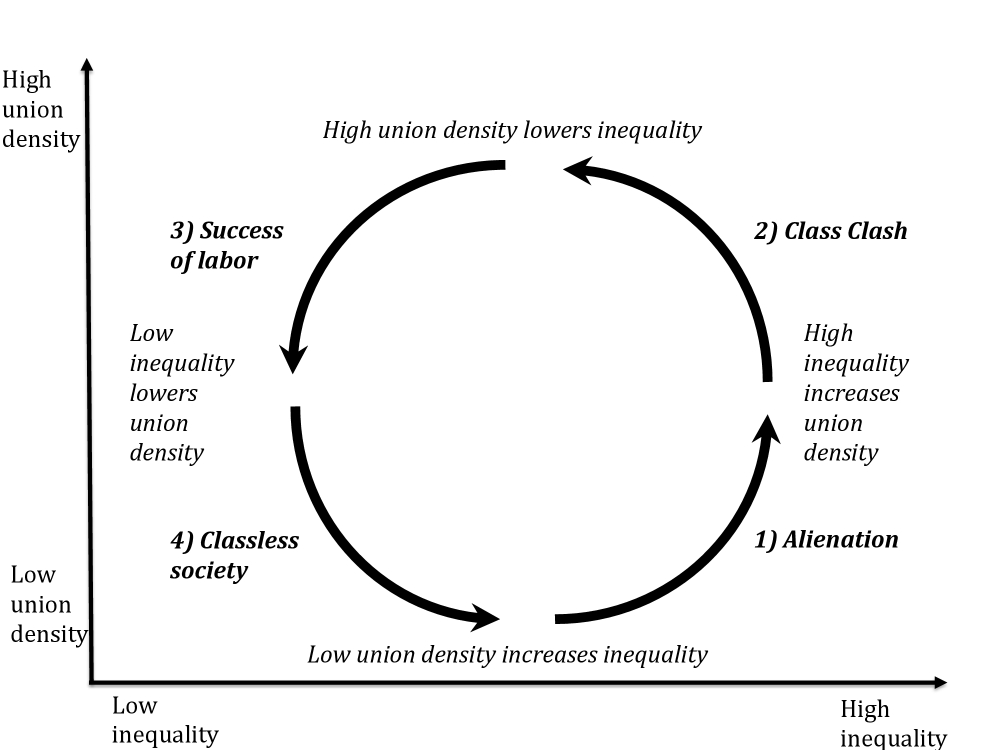Imagine a population of wolves and sheep. Wolves eat sheep. The wolve population grows, as long as there are sheep. But once the wolves have eaten all the sheep, the wolves starve and die. When the wolves are gone, the sheep population can recover. This is a basic prey and predator model. Essentially, it shows how trade union power is linked to inequality, trade unions are the wolves and inequality is the sheep.
Using data from 12 countries over 100 years, I can show with my co-author Louis Chauvel that trade unions recruit more members after inequality has been high. Strong trade unions then fight inequality. But in doing so, they destroy what helped them to recruit members in the first place. Once they have managed to lower inequality, no one has an incentive to join a trade union anymore. Trade unions then lose members, so that inequality can eventually increase again. If this happens, eventually people have an interest to join trade unions again, and they do. So again you have trade unions fighting inequality, but by doing so sowing the seeds of their own demise. We thus found the following dynamic:

We found this dynamica characterizes the development of inequality and trade union membership in Australia (from 1950- 2010), Canada (1941-2010), Denmark (1870-2010), France (1905-2009), Germany (1891-1998), Italy (1974-2009), Japan (1947-2010), the Netherlands (1914-1999), Norway (1900-2008), Sweden (1903-2010), the UK (1918-2009) and the US (1917-2011). By showing this empirically, we reconceptualise the relationship between inequality and union density as a prey and predator model, where predators eat prey – unions destroy inequality, but thereby also destroy their own basis for survival. By empirically showing that trade union density and social inequality influence each other in this way over long periods, this article contributes shows how social problems get met by social reactions, but these reactions overshoot and they often come to late.
For the entire article, check out this address:
